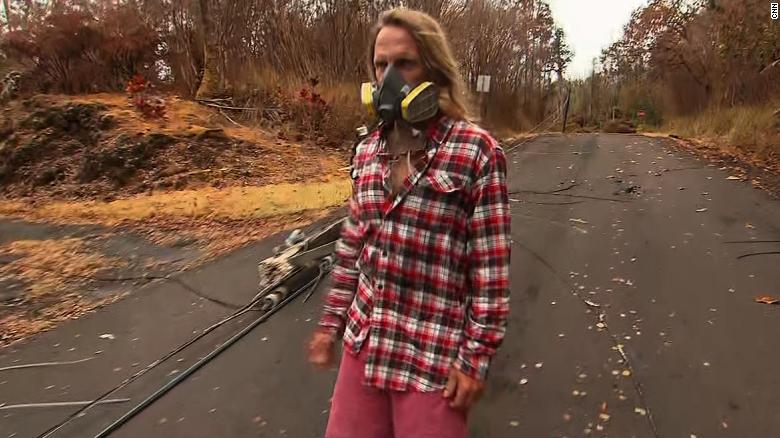When the
Kilauea volcano erupted on May 3, Gebbie and hundreds of others were forced from their homes in the Leilani Estates subdivision. His home is still standing today, but it's surrounded by toxic gas.
"It's hard to believe that it's happened in our neighborhood," Gebbie says. "And every day has gotten worse."
Residents have been periodically allowed back to their homes to check on them.
Fissures, or cracks in the ground, are opening wider and wider by the day. The lush green jungle has turned into yellow and rotten vegetation. Sections of streets that disappeared under the lava two weeks ago now look like a river of black molten rock.
The toxic gas continues spewing from the fissures.
Gebbie, 56, says the windows and doors of his home have turned orange due to the gas. He knows he will likely never be able to live there again.
"We can't give up," said Gebbie, who's lived in Leilani Estates for 12 years.
"This is paradise," he added.
21st fissure forms
A new fissure opened up Thursday evening, adding a new hazard for residents of Hawaii's Big Island, officials said.
In the past week, an eruption from the volcano's summit shot ash and smoke 30,000 feet into the air, new fissures appeared and some earlier ones reactivated flowing lava.
Authorities handed out almost 18,000 masks to help residents deal with the fallout.
Scientists with the United States Geological Survey expect eruptions to continue.
"At any time, activity may again become more explosive, increasing the intensity of ash production and producing ballistic projectiles near the vent," the USGS said. "Ballistic projectiles may be produced should steam-driven explosions occur. Impacts will be limited to an area around Halemaumau."
Halemaumau is the crater within Kilauea's summit caldera.
CNN's Stephanie Elam reported from Pahoa, Hawaii, Nicole Chavez wrote and reported from Washington. CNN's Joe Sutton contributed to this report.

No comments:
Post a Comment